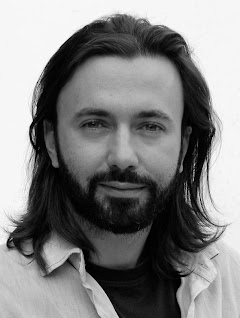Beat
My work focuses on cultural and social issues in this diverse part of Africa, as well as the challenges the region faces, its hopes for the future and the reality on the ground.
One Shot

“I decided to take this photo when I saw an unexpected moment filled with beauty. The picture gives me a feeling of calm. The woman seems serene, like she has a sense of purpose, and the vegetation around her seems to be protecting and embracing her.”
Profile
My first memory of photography comes from when a family friend visited us in Kenya when I was around 14-years-old. He was a famous portrait photographer who had taken pictures for years of some of Hollywood’s most famous celebrities. I remember his way of noticing details and light. I was fascinated to see how his career as a photographer had allowed him to really see people.
I have always had a passion for taking pictures, but I never thought seriously about pursuing a career in photography until I was 24-years-old, when I decided to travel through Asia for a year after finishing my BA in journalism. A good friend gave me a Canon camera with a wide-angle lens. It was an analog camera, which was really exciting because it meant that I couldn't look at my pictures until the end of my journey. On this trip I started really thinking about the way I took photographs. I began to look deeper into what I was seeing and to try to show a story that could transcend the framed moment of a single image.
My first real job in the field of photography was with IRIN, a United Nations news agency. My mentor and dear friend Manoocher Deghati, who was then IRIN’s chief photo editor, assigned me to go and cover the situation at the Kakuma refugee camp in northern Kenya, the second biggest refugee camp in the country. I remember the excitement of being able to shoot my first story but also the worry of wanting to cover it well. Working on such assignments can be overwhelming sometimes as you are taking pictures of people in a very personal situation. I learnt that, as a photographer, being shy is not an option but at the same time you have to always respect the people and stories you are photographing.
Covering the bloodshed between two rival ethnic groups in the Tana Delta of the Kenyan coast in January 2013 left a big mark on me. Eleven people had been slaughtered just a couple of hours before I arrived, mostly women and children. It was a heart-breaking scene; there was death all around and the air was filled with the screams of desperate relatives who had lost their loved ones. I tried my hardest not to take in the pain of witnessing such a scene. Instead, I used my camera as a shield and told myself that the only help that I could give to this stricken community was to document the aftermath of the attack in the only way I could – by taking pictures.
The stories that excite me the most vary a great deal, because every assignment has something important about it. I most enjoy working on projects where I can take my time and not rush in and out in a day. To fully immerse myself in my work, I need to allow people to get to know me first. This takes patience and time, but it's one of the most special parts of being a photographer.
It's important not to take things for granted because often the most relevant photographs appear in front of us at the most unexpected of moments. We always have to be looking.
My audience is anyone who has an interest in what is happening in the world we share. My ultimate goal is to empower the people who see my work to reflect on the stories that I cover.
My biggest lesson has been to try and stay enthusiastic and respectful when I move from story to story and meet a variety of different individuals in very different situations. The only way to truly immerse myself in my work is to be accepted by the people I photograph.
Behind the Scenes

